John Hurrell – 28 October, 2010
Yet this show seemed so disparate in its focus, its works too diminutive and portable (and lacking in ideational wallop) to have any real impact in the space. More muscular three dimensional work would have engaged more successfully with the gallery dimensions.
Christchurch
Geordie Allardice, Josephine Jakobi, Ian Jones, Michel Kemp, Catherine Laudenbach, Jennifer Murray, Louis Patterson, Neale Stratford, Suzanna Watterson
undercurrent: a trans-Tasman exchange
Curated by Julian Holcroft and Rodney Forbes
28 September - 13 October 2010
This is one of two linked shows that the University of Canterbury Art School has done in an exchange with Monash University in Victoria, Australia - its Gippsland Centre for Art and Design. This display by a group of Australian students was assembled by Julian Holcroft and Rodney Forbes, while the other of Christchurch students was put together by Robin Neate.
Shows like these are difficult to comment on because in many ways a student is not a true artist until they have freed themselves from the influence of their teachers and long left the university. Of course that sounds terribly simplistic, for it can be the other way round, with teachers absorbing ideas from their pupils (such as when say, Christchurch icon Bill Sutton was influenced in the late fifties by Ted Bracey), or that students have an independence in their practice and a maturity of thought right from the start.
So given that this selection of Australian work was seen in Christchurch in quite a different context from that in which it was made, it was very good to have a chance to ponder over some of what is currently being produced in Melbourne. Yet this show seemed so disparate in its focus, its works too diminutive and portable (and lacking in ideational wallop) to have any real impact in the space. More muscular three dimensional work would have engaged more successfully with the gallery dimensions.
Looking at the individual artists, Neale Stratford’s photographs of workmen bagging pieces of asbestos managed to convey a chilling mood while Catherine Laudenbach’s series of images within Belango State Forest were more ambiguous in their Lynchean sense of an immanent danger or the uncanny.
Josephine Jakobi’s images of handmade toy horses lined up in patterned array against landscape backdrops revealed what a shame it was she didn’t install them directly in the Canterbury space or outside it, while Jennifer Murray’s little acrylic paintings on paper of ships and colourful machinery at work in Antarctica really needed to be published in a book as a much larger series.
Geordie Allardice’s whimsical art machine had folksy overtones of H.C.Westermann and Jim Nutt, but with purchasable items - like folded t-shirts - placed on the plinth seemingly to make the work a portable sales bench too. Louis Patterson’s cardboard construction of a chair and battery used for torture referenced Ricky Swallow, but looser in finish (perhaps as a sort of sick pun on shaking chairs), while Ian Jones’ pages of intricate patterned ink drawing needed to be larger to have more presence.
The highlights of the show were Michel Kemp’s organic and richly detailed, flowing collages that seemed to ooze along the wall like floating leaves, and Suzanna Watterson’s plastic road and shop signs with glued-on lettering that as oddly terse poems in the public space, contained peculiar phrasing that twisted conventional direction-giving awry. Kemp and Watterson’s contributions had a confidence that drew you back for repeated viewings in an exhibition that overall whilst not particularly dull or boring, wasn’t earth-shatteringly exciting either. In other words, nice to check out but somewhat anaemic.
John Hurrell
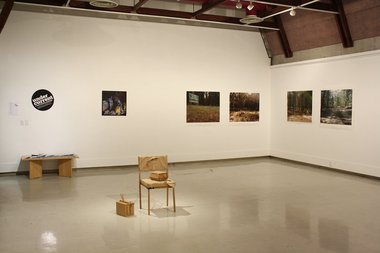
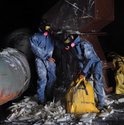
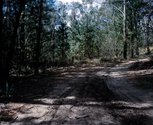
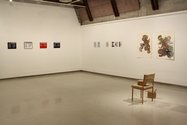

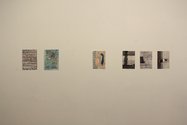
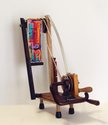
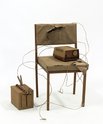
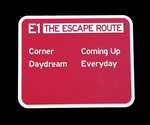

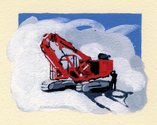
 Advertising in this column
Advertising in this column Two Rooms presents a program of residencies and projects
Two Rooms presents a program of residencies and projects



This Discussion has 0 comments.
Comment
Participate
Register to Participate.
Sign in
Sign in to an existing account.